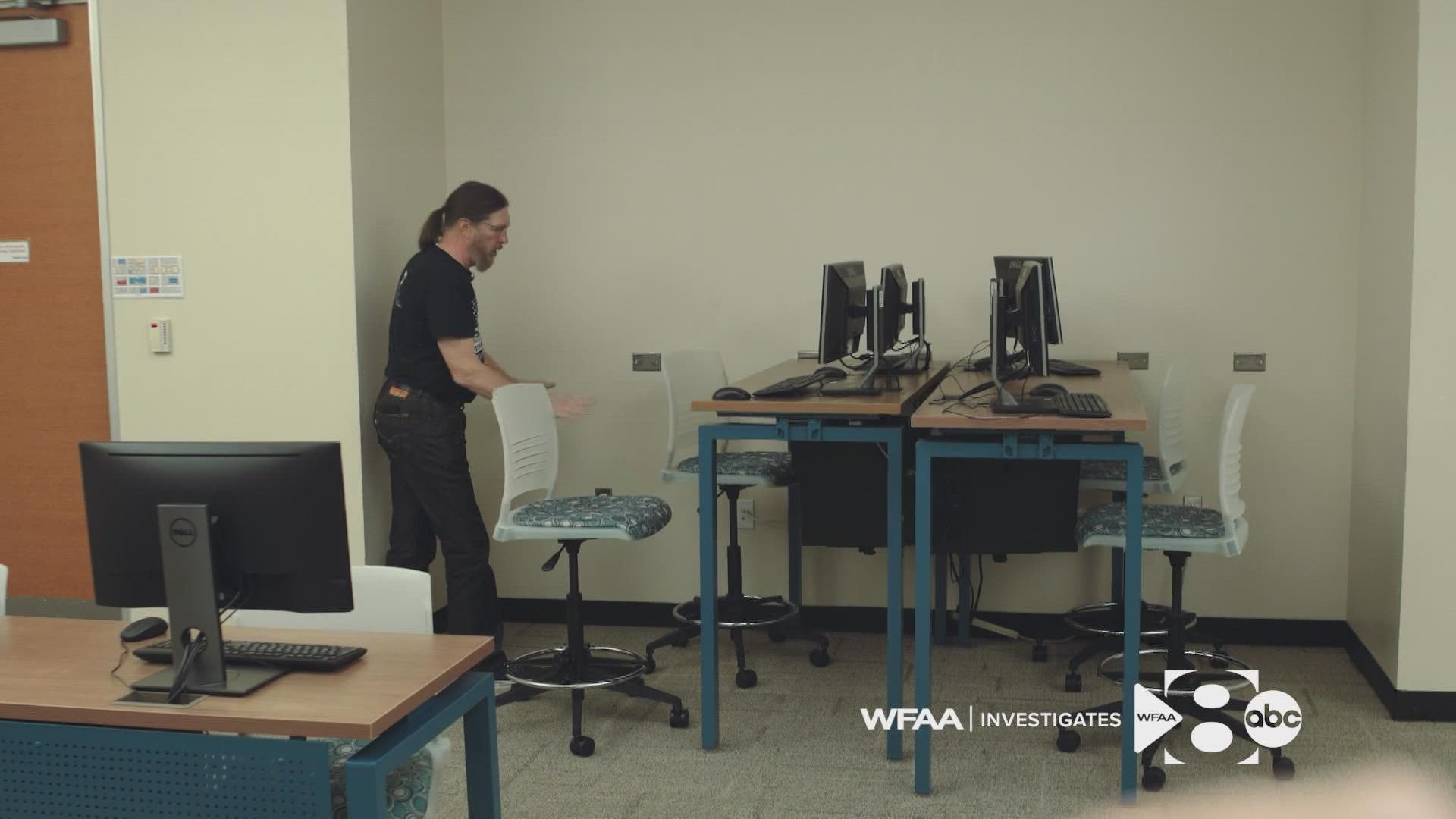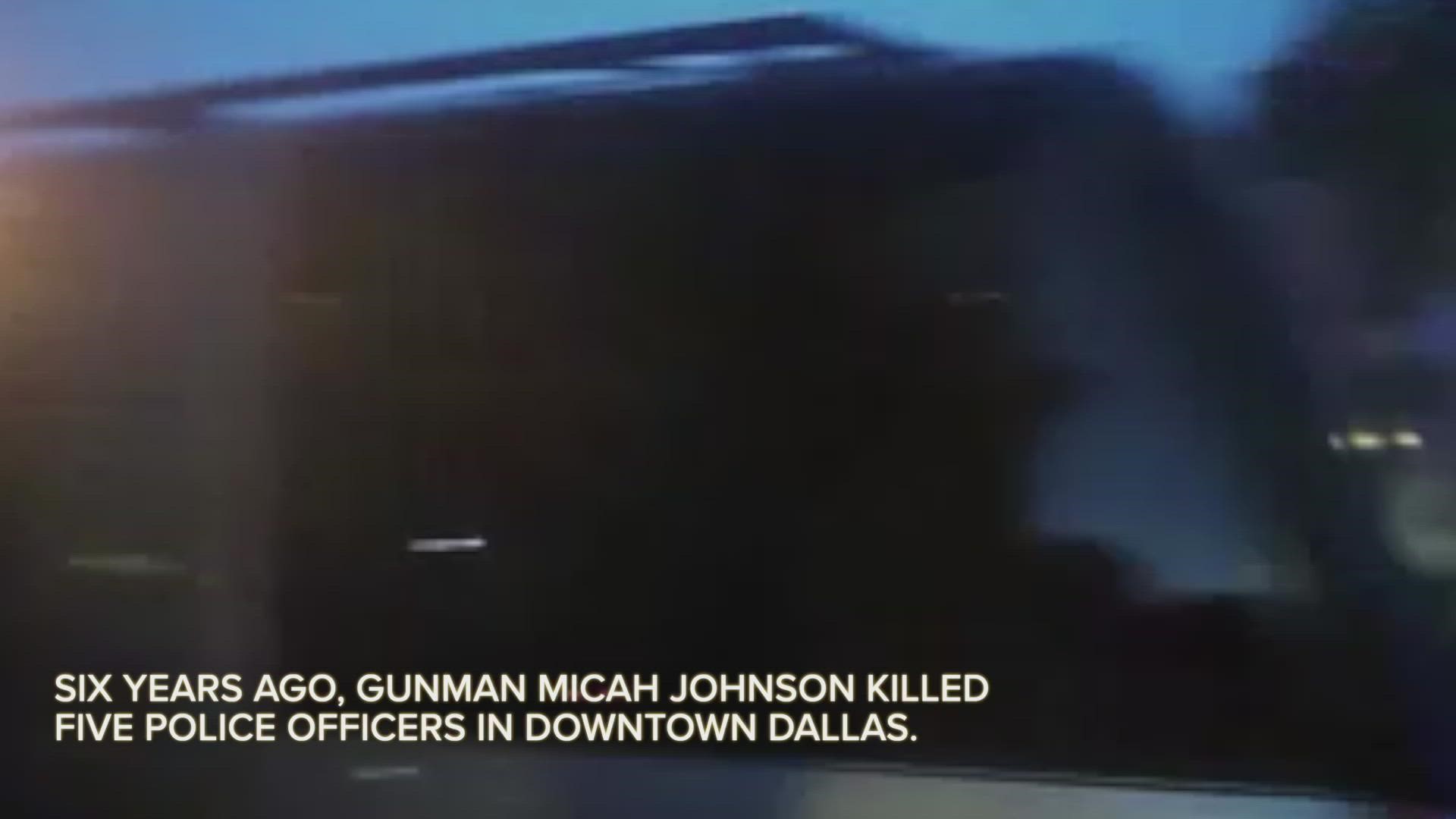'I'm going to take the bullets': Inside the trapped class as Dallas 7/7 shooting and explosion unfolded
Despite repeated 911 calls, police overlooked a classroom when evacuating El Centro College before setting off explosives to kill the suspect.
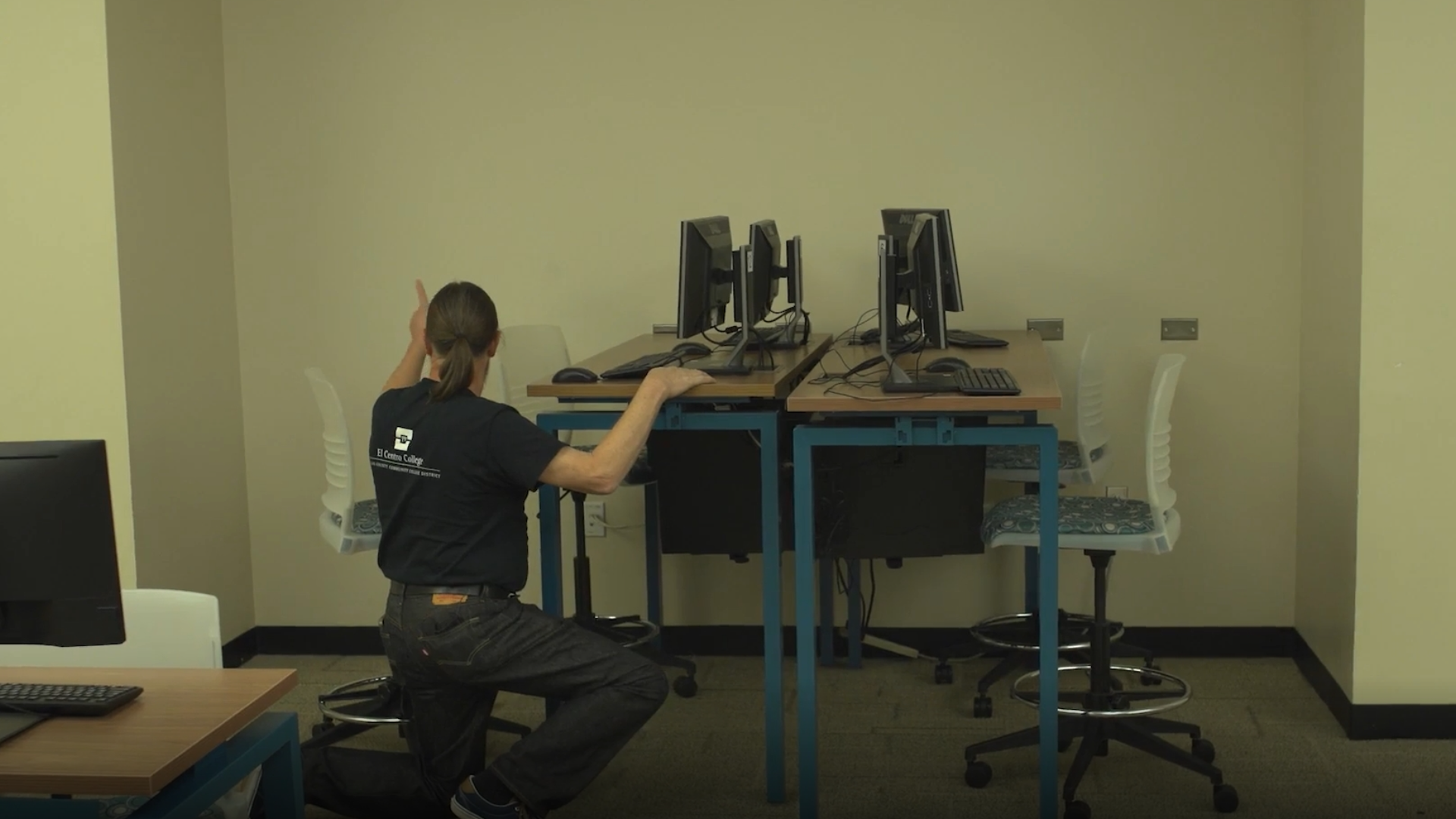
Six years ago today, at the conclusion of a peaceful protest of police killings in other states, gunman Micah Johnson killed five police officers in downtown Dallas. What was never revealed publicly – until now – is that an El Centro professor and five students were trapped in a classroom the entire time, less than 100 feet away from where the gunman had barricaded himself and died when police killed him with explosives. This is their story.
Chaos outside El Centro Students, teacher trapped as gunfire erupts
Caller: “We’re located in El Centro College and there’s a shooting going on.”
911 operator: “You’re in El Centro?”
Caller: “Yes.”
911 operator: “Are they shooting inside El Centro?
Caller: “Yes.”
The caller was Stephen Upham, an El Centro College professor.
Upham and the five students spent eight hours trapped in a classroom on July 7, 2016.
“I don't consider myself a hero,” Upham told WFAA in an exclusive interview. “I was just doing my job.”
On that evening, Upham arrived in downtown Dallas at about 7 p.m. to teach his English as a Second Language class. Most of his students were from other countries and were working on learning the language.
Upham did not know about a protest that had been scheduled in response to the police killings of Alton Sterling in Louisiana and Philando Castile in Minnesota.
The protest went right by El Centro.

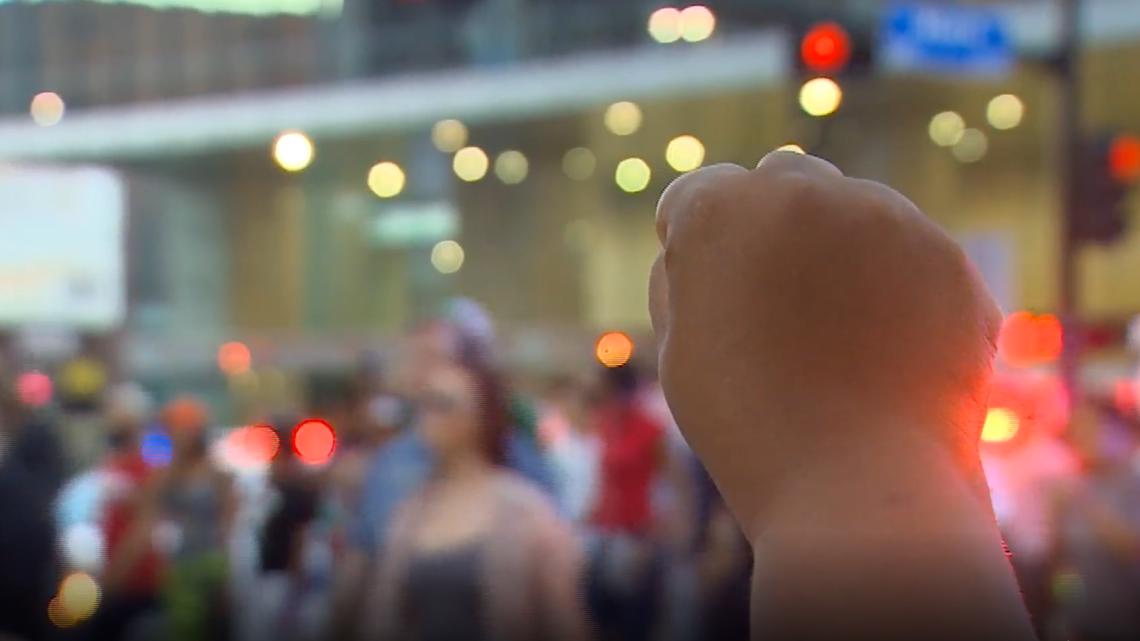
Classes let out that evening at about 9 p.m., the same time the protest was finishing. Suddenly, a gunman began shooting at officers at the intersection of Main and Lamar Streets, just outside the college. Chaos erupted, sending protestors fleeing. Police ran towards the bullets.
Upham was in a hallway on the second floor of the B building. A student called him over to a window overlooking the street. Upham saw officers crouching behind a box truck, guns drawn. An officer motioned for Upham to get away from the window.
“That’s when I know that we’re in danger,” he said.
He and the students went back to their classroom, locked the door and hid, taking care to avoid being seen through window panels beside the door looking into the hallway.


Minutes later, the lone gunman, Micah Johnson, shot his way into the college. Unbeknownst to Upham and the students, Johnson came up the stairs and right past their classroom. They could hear gunfire, but they still did not know what was going on. Johnson was targeting police, but Upham had no way of knowing that at the time. He and his students had no idea where the gunman was, how many shooters there were, or who was being targeted.
They just knew they’d better hide.
Upham also did not realize that the shooter had chosen to make his last stand against police just down the hall, around the corner.
911 calls made from El Centro Calls are made from Room B268
In that first 911 call, Upham talks to the operator for more than 13 minutes.
911 operator: “What building are you in?
Upham: “I’m in the B building.”
911 operator: “Do you see the person?
Upham: “No, we’re not going outside.”
911 operator: “How many shots?”
Upham: “It was multiple. Probably 30 to 40 shots. It sounded like automatic gunfire.”
“When I made that call, I did feel the desperation of, ‘Hey, you need to know we’re here because we need help,’” Upham told WFAA.
On the call, an emergency alarm blares in the background. He tells the operator that they are in room B268.
911 operator: “Are your students OK?”
Upham: “They’re kind of scared.?
911 operator: “I understand, help them stay calm.”
Upham told the operator he heard voices outside but had no idea if it was the police. The operator told him to stay with the students.
911 operator: “We’ll let you know when it’s OK to come out.”
Upham told the operator he could hear more shooting 50 or 60 feet away.
911 operator: “I’m going to let them know where you are.”
Upham: “OK.”


It’s unclear who the operator told. The message never reached the tactical team on the second floor. They had no idea that Upham and his students were trapped there.
Inside the classroom, students saw media coverage of the massacre on their phones -- their first inkling of what was happening outside. Upham texted his family to let them know he was OK – for now.
“I love you and hope to see you soon,” he said he told them.
Meanwhile, he prepared his students for the worst. If a gunman enters the classroom, he told his students he would rush the shooter.
“That’s going to give you about three steps because they’re going to be concentrating on me,’” he said he told them. “So, I’m going to take the bullets, but you’ve all got to rush them and get on top of him.”
Outside, police continued negotiating with the gunman, trying to convince him to give up peacefully.
Upham called 911 again, sounding more desperate.
911 Operator: “Dallas 911, what’s your emergency?”
Upham: “Do not hang up on me … I’m telling you, we are locked in a room at El Centro College in downtown Dallas on the second floor. We’re in B as in boy 268. We heard multiple shots, probably in the neighborhood of 100 to 150 shots.”
911 Operator: “OK, sir. I’m showing we do have a call in for police.”
Upham: “Can you stay on the line with us?”
911 Operator: “As soon as they can get to you, they will be there.”
Upham: “You just want us to hang up?”
911 Operator: “Sir, I’m not sure what I can do. They’re trying to get to you as fast as they can.”

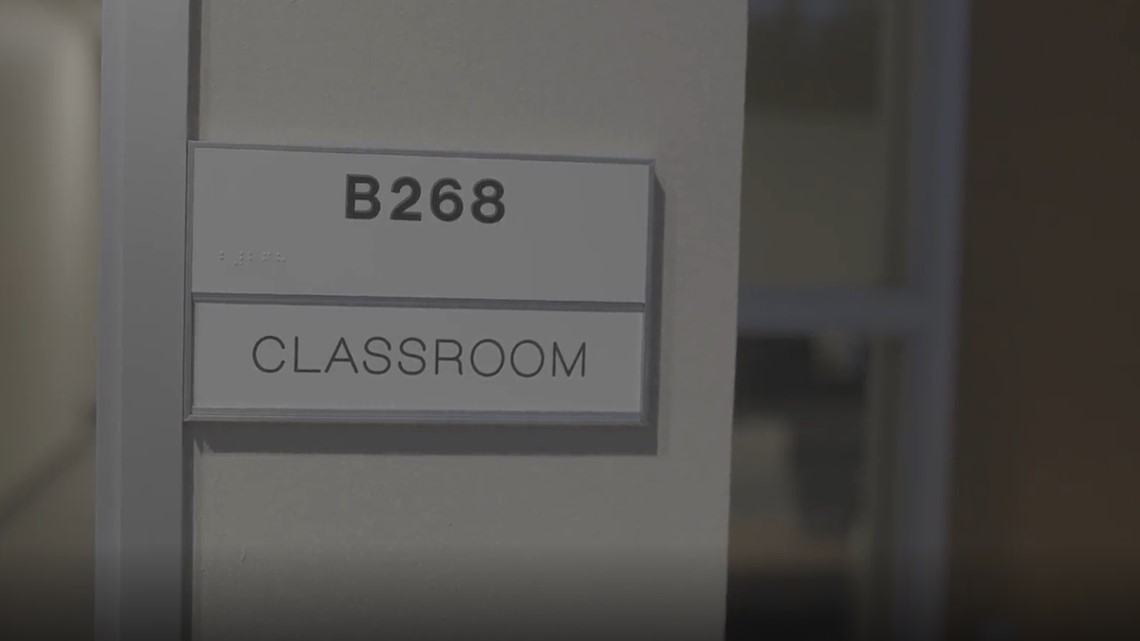
Trapped Help doesn't come for students, teacher trapped
No one came and word never reached the tactical officers on the second floor.
Meanwhile, police were evacuating dozens of workers and students out of other areas of El Centro. Body cam videos show officers talking and standing right outside the classroom where Upham and the students were hiding. Several officers looked in and tried opening the locked door, videos show.
But officers never unlocked and opened the door, and Upham and his students never made any sound and could not see who was outside from their vantage point. They remained trapped.
Realizing the gunman would not surrender, police came up with a plan to end the standoff. They decided to strap explosives to a robot and send it down the hall.
At about 1:30 a.m., SWAT detonated the bomb near Johnson.
Upham said suspended ceiling tiles inside his classroom popped up from the blast concussion.
“We felt the bomb in our bones,” Upham said.

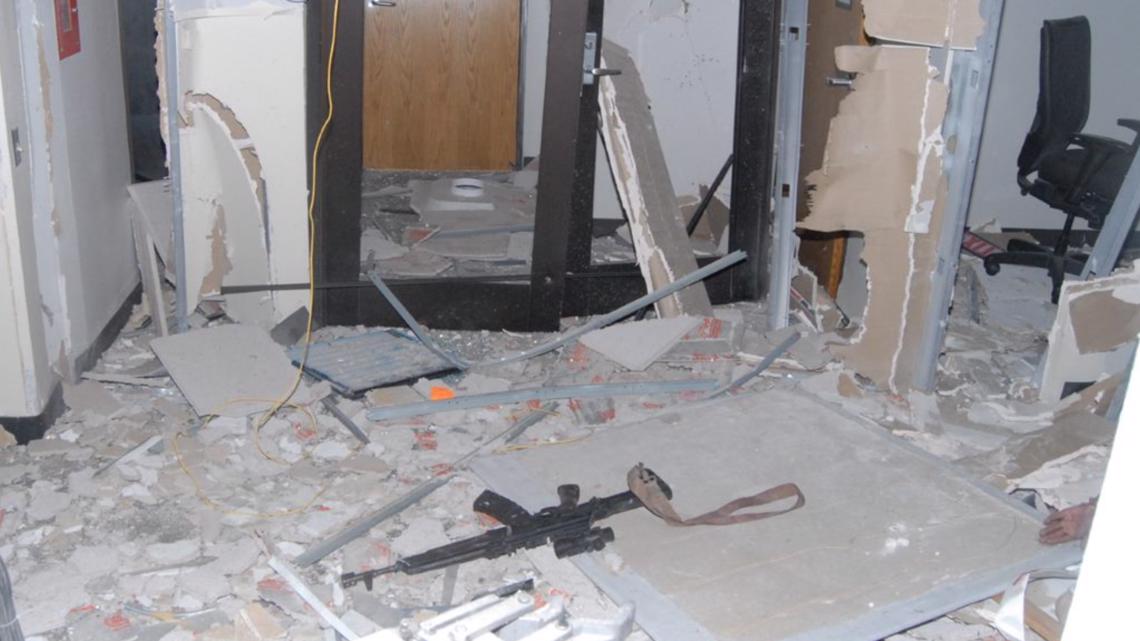
About 45 minutes later, according to police records, Upham sent a Facebook message to a friend asking them to let police know they’re still inside the classroom.
Still, no one came to get them.
Saved, at last Eight hours later, the students and teacher were saved from the classroom
More than three hours later, about 5:30 a.m., Upham called 911 again. This time, help arrived.
“Three officers come to the door,” Upham said. “They were just wide-eyed. You could just tell from their expressions that they are surprised to see us.”
For eight hours, they had no food, no water and no place to go to the bathroom. But they were alive.
“If you ever hear gunfire in your hallway, you get religion pretty quick,” he said. “And then when a bomb goes off in your hallway, it changes you.”
They finished their class in another location that summer.
Dallas police never revealed what happened, and Internal Affairs records related to the tragedy show there was no investigation into the oversight that left Upham and the students trapped in close proximity to the standoff.
SWAT officers told WFAA they had no idea at the time that the floor had not been fully cleared.
The Dallas police chief at the time, David Brown, who now leads the Chicago Police Department, did not respond to WFAA’s questions.
Upham is still teaching.
He still reaches out to those five former students on their birthdays and the anniversary of that night.
“This story needed to be told,” he said. “Those five students were incredibly brave.”

